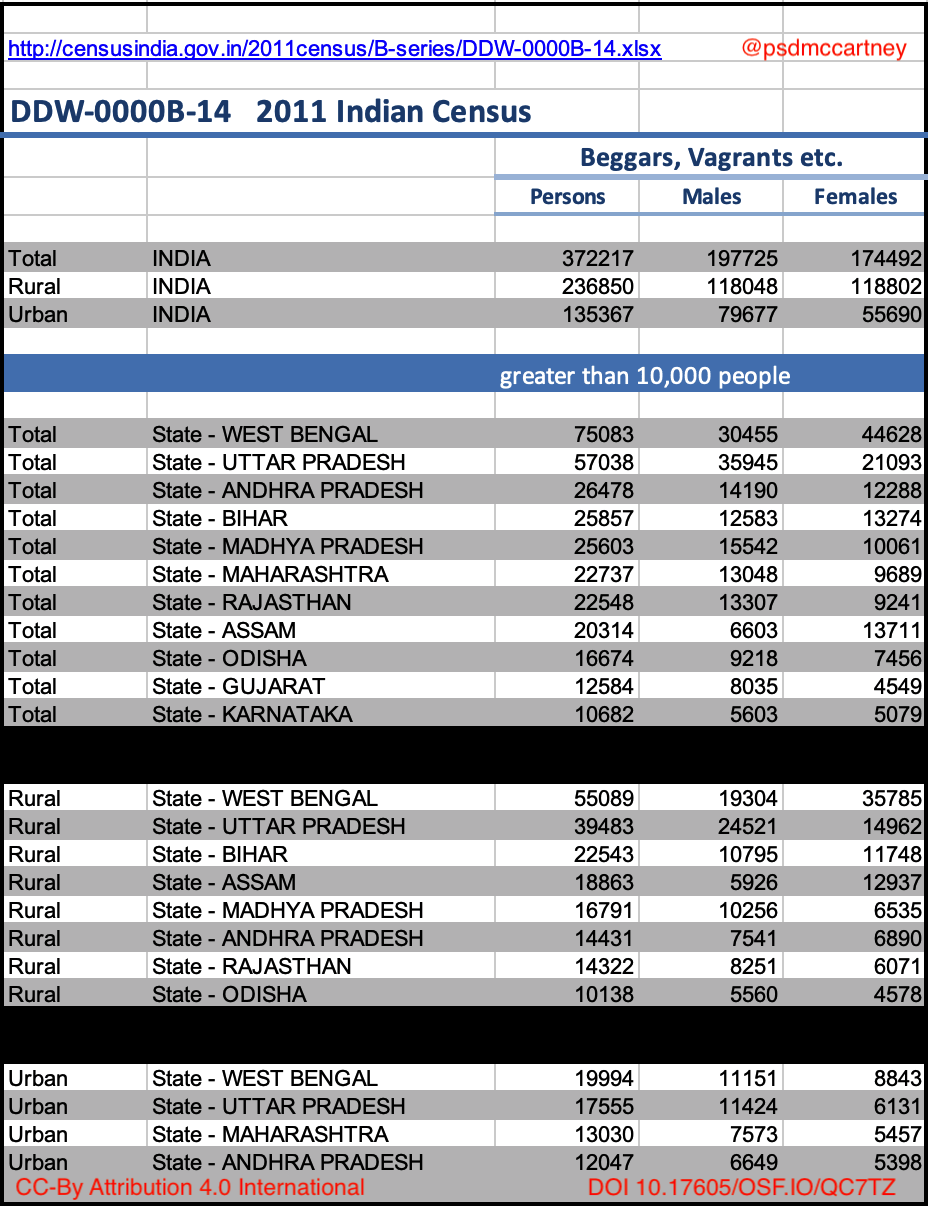This is where you'll find random bits of data that will at some point be made into maps or something similar. Data will be stored also at
https://dataverse.harvard.edu/dataverse/imaginingsanskritland
https://dataverse.harvard.edu/dataverse/imaginingsanskritland
Here is some data I filtered out from the 2011 Indian Census B-series table B-14. The full name is Table B-14 Non-Workers By Main Activity, Age, Sex And Religious Community - 2011(India & States/UTs).
DOI 10.17605/OSF.IO/QC7TZ
The original dataset is available at http://censusindia.gov.in/2011census/B-series/DDW-0000B-14.xlsx
It shows data related to total numbers of vagrants and beggars. Each row of data is first ordered by total persons. The top shows the national totals and rural and urban. The second looks at state totals above 10k tokens and the next two sections show the same data but filtered for rural and urban figures. The data show 372,217 people were beggars/vagrants across all of India. West Bengal has the highest state total with 75,083 followed by Uttar Pradesh 57,038. The rural and urban categories are also topped by the same two states. All the data was set to include the totals for all age groups and religious communities. In the rural and total state categories, both West Bengal and Assam have higher figures for women than men.
DOI 10.17605/OSF.IO/QC7TZ
The original dataset is available at http://censusindia.gov.in/2011census/B-series/DDW-0000B-14.xlsx
It shows data related to total numbers of vagrants and beggars. Each row of data is first ordered by total persons. The top shows the national totals and rural and urban. The second looks at state totals above 10k tokens and the next two sections show the same data but filtered for rural and urban figures. The data show 372,217 people were beggars/vagrants across all of India. West Bengal has the highest state total with 75,083 followed by Uttar Pradesh 57,038. The rural and urban categories are also topped by the same two states. All the data was set to include the totals for all age groups and religious communities. In the rural and total state categories, both West Bengal and Assam have higher figures for women than men.

